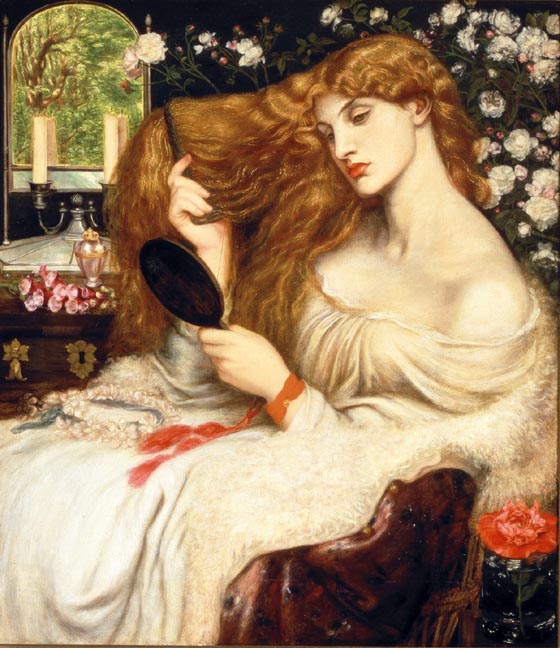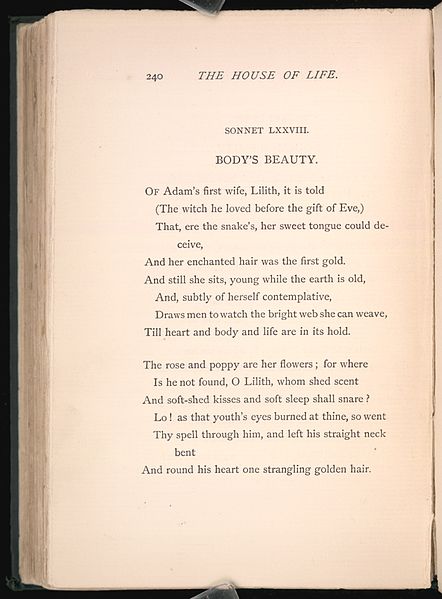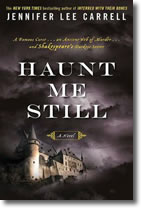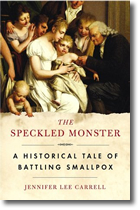Lady Lilith by Dante Gabriel Rossetti (1872-73)
Delaware Art Museum, Wilmington, Delaware
CC BY-SA 3.0 image from Wikimedia Commons
“Lily MacPhee had her grandmother’s wide-set eyes and high cheekbones, though her coloring was entirely different. Flame-red hair spilled in waves past her shoulders. Her milk-white skin was scattered with freckles like stars, and her eyes were a pale sea-green. A small jewel winked in her nose. The Pre-Raphaelites, I thought, would have fought bitter duels among themselves for the right to paint her as Guinevere or the Lady of the Lake.”
Lily, though, has a dash of Botticelli, as well:
“On her head was a wreath of creamy rowan blossoms that frothed with a heady sweet scent as she moved. In her dress, she might have walked out of a painting or poem by Rossetti, or Millais, or Burne-Jones. But the red hair curling loosely around her was that of Botticelli’s Aphrodite.”
Detail from The Birth of Venus by Sandro Botticelli (1486)
Uffizi Gallery, Florence
Rossetti later wrote a poem about his painting:
“And round his heart one strangling golden hair…” Beauty like this is strangely powerful, and desire has always seemed to be a dangerous kind of magic. Still, I find it endlessly fascinating that men and women have so often suspected it to be evil.










